May Day is a public holiday usually celebrated on 1 May. It is an ancient Northern Hemisphere spring festival and a traditional spring holiday in many cultures. Dances, singing, and cake are usually part of the festivities.
Ancient spring rites that related human fertility to crop fertility gave birth to most modern May Day festivities. May 1 is the traditional day to crown the May queen, dance around the maypole, perform mummers’ plays, and generally celebrate the return of spring. Although our Pilgrim fathers were horrified by these reminders of a pagan past and outlawed all such activities, the maypole dance remains an enduring event.
In Great Britain, the custom of “bringing in the May” involves gathering “knots,” or branches with buds, on the eve or early morning of May 1. In England, a favorite branch is hawthorn. In Scotland and Wales, people choose the rowan, or mountain ash. In North America, we often select forsythia, lilac, or pussy willow branches to bring spring and the prospect of new life into our homes.
The best known modern May Day traditions, observed both in Europe and North America, include dancing around the maypole and crowning the Queen of May. Fading in popularity since the late 20th century is the tradition of giving of “May baskets,” small baskets of sweets or flowers, usually left anonymously on neighbors’ doorsteps.
In the late 20th century, many neopagans began reconstructing some of the older pagan festivals and combining them with more recently developed European secular and Catholic traditions, and celebrating May Day as a pagan religious festival.
The Maypole
It’s impossible to think of Mayday without thinking of the Maypole. This is perhaps one of the most popular symbols of the season, representing the Divine Marriage between the Lord and Lady of the Greenwood. The pole represents the male principle, and the ribbons that wrap around it (and the wreath placed atop the pole) are symbolic of the female principle.
The Maypole represents the phallus of the God. The wreath atop represents the vagina of the Goddess. As the Maypole is danced, the ribbons wind around the pole and the wreath lowers, symbolizing the Divine Marriage, the sexual union of God and Goddess.
The Maypole Dance
The May Day dance is rich in pagan symbolism. There are usually eight dancers, one for each sabbat of the year, paired into four couples. (Of course, many more may dance. This is only a suggestion.) The dance involves moving in circles and weaving over and under the other dancers. The women take the white ribbons with their right sides to the pole, and the men take the red ribbons with their left sides to the pole.
The weaving of the symbolic birth canal begins with music or chanting as everyone moves forward from where they stand, moving alternately over and under each person coming toward them. (To start, the men begin weaving under the upheld ribbon of the first woman they encounter). Continue the dance until the maypole is wrapped. Tie off the ribbons and let the wreath drop to the ground.
Many folks wear bells when dancing the May dance. Make your steps a cross between a skip and a jog, coming down in time to the music, so that the bells mark off the beats of the music or chant.
May Day Chants
We are the flow and we are the ebb
We are the weavers, we are the web
We are the needle, we are the thread
We are the witches, back from the dead
Weavers, weavers,
We are weaving the web of life.
Weave, weave, weave me a rainbow
Out of the falling rain.
Weave me the hope of a new tomorrow.
Fill my cup again
Lady, weave Your circle tight
With a web of living light
Earth and Air and Fire and Water
Bind us to you.
The Pole
The traditional Maypole is a fir tree that has been stripped of all but its uppermost branches (often the trunk of the Yule tree was saved for the Maypole), but traditions vary. Some use oak; others pine. It may range in height from a few feet to as large as you care to make it. (Bear in mind, ribbon will need to be twice as long as the pole.) With unlimited space outdoors, ten feet is a good length. Of course, in a pinch, even a flagpole would do. For those who have restricted space or who have to celebrate indoors, a 3-4 foot dowel inserted in a wooden base and placed upon the altar will work as well.
If you cut a tree for the Maypole, please ask the tree’s permission before cutting and leave an offering at the base. An offering of food, wine, or flowers is entirely appropriate.
The Ribbons
However many ribbons you use, you will need equal numbers of at least two colors, depending on the number of dancers you’ll have. I recommend at least 6-8 dancers. Ribbons for the pole should be twice as long as the pole and about two to three inches wide. Colors vary according to preference. Traditional colors are red for the God and white for the virgin Goddess. Some use colors of the season — hunter green for the forest, gold for the sun, or purple for the color of grapes and wine. I’ve even heard of people using a rainbow of colors to represent the signs of the zodiac. Some traditions request that dancers bring a ribbon in a color representing a certain blessing they might wish for.
The ribbons can be tied just below the topmost branches of the tree or adhered to the top of the pole with thumbtacks, nails, or glue. In Dancing with the Sun, Yasmine Galenorn recommends making crosscuts on the top end of the pole, tying knots on the end of each ribbon, and threading the ribbons through the slits at the top of the pole. The knots will keep the ribbon from sliding out of the slits as it is woven around the pole.
The Wreath
The wreath should be made on Beltane morning. It is traditional to go to the fields to gather May flowers at this time. Fashion a wreath from greenery and decorate with the first blooms of the season. It must be somewhat bigger than the top of the maypole, taking into account any branches you left at the top, in order that it may fall down the pole as the ribbons are wound.
Consecrate the Maypole
Erection of the Maypole should be carried out with great fanfare. Once the tree has been selected, cut down, and the branches removed, it might be carried in processional to the dance site. Next, a hole must be dug. Pour an offering of water with a pinch of salt or a purifying herb like rosemary into the opening with words like:
Earth Mother, may this offering
Prepare you to receive
This symbol of your consort, our Lord.
Next, anoint the Maypole itself, using altar oil or a mixture of any of the following: myrrh, musk, and/or sweet woodruff. With the oil, make the sign of the solar cross, or the Rune inguz, a rune related to the annual “king’s circuit,” or walking of the land, to ensure the fertility of the land:
At each anointing, say:
Blessed be this tree,
Vehicle of our Lord
Which shall soon enter
Our Mother, the Earth.
When the Maypole has been erected and decorated, light the balefire and celebrate!
Historical May Day Celebrations
The earliest known May celebrations appeared with the Floralia, festival of Flora, the Roman goddess of flowers, held on 27 April during the Roman Republic era, and the Maiouma or Maiuma, a festival celebrating Dionysus and Aphrodite on an unknown date in May every three years. The Floralia opened with theatrical performances. In the Floralia, Ovid says that hares and goats were released as part of the festivities. Persius writes that crowds were pelted with vetches, beans, and lupins. A ritual called the Florifertum was performed on either April 27 or May 3, during which a bundle of wheat ears was carried into a shrine, though it is not clear if this devotion was made to Flora or Ceres. Floralia concluded with competitive events and spectacles, and a sacrifice to Flora.
According to the 6th century chronicles of John Malalas, the Maiouma was a “nocturnal dramatic festival, held every three years and known as Orgies, that is, the Mysteries of Dionysus and Aphrodite” and that it was “known as the Maioumas because it is celebrated in the month of May-Artemisios”. During this time, enough money was set aside by the government for torches, lights, and other expenses to cover a thirty-day festival of “all-night revels.” The Maiouma was celebrated with splendorous banquets and offerings. Its reputation for licentiousness caused it to be suppressed during the reign of Emperor Constantine, though a less debauched version of it was briefly restored during the reigns of Arcadius and Honorius, only to be suppressed again during the same period.
A later May festival celebrated in Germanic countries, Walpurgis Night, commemorates the official canonization of Saint Walpurga on May 1st, 870. In Gaelic culture, the evening of April 30th was the celebration of Beltane (which translates to “lucky fire”), the start of the summer season. First attested in 900 AD, the celebration mainly focused on the symbolic use of fire to bless cattle and other livestock as they were moved to summer pastures. This custom continued into the early 19th century, during which time cattle would be made to jump over fires to protect their milk from being stolen by fairies. People would also leap over the fires for luck.
May Day was abolished and its celebration banned by Puritan parliaments during the Interregnum, but reinstated with the restoration of Charles II in 1660. 1 May 1707, was the day the Act of Union came into effect, joining England and Scotland to form the Kingdom of Great Britain.
Queen Guinevere’s Maying, by John Collier
For thus it chanced one morn when all the court,
Green-suited, but with plumes that mocked the may,
Had been, their wont, a-maying and returned,
That Modred still in green, all ear and eye,
Climbed to the high top of the garden-wall
To spy some secret scandal if he might,
Since the 18th century, many Roman Catholics have observed May – and May Day – with various May devotions to the Blessed Virgin Mary. In works of art, school skits, and so forth, Mary’s head will often be adorned with flowers in a May crowning. 1 May is also one of two feast days of the Catholic patron saint of workers St Joseph the Worker, a carpenter, husband to Mother Mary, and surrogate father of Jesus. Replacing another feast to St. Joseph, this date was chosen by Pope Pius XII in 1955 as a counterpoint to the communist International Workers Day celebrations on May Day.
In the late 19th century, May Day was chosen as the date for International Workers’ Day by the Socialists and Communists of the Second International to commemorate the Haymarket affair in Chicago. International Workers’ Day can also be referred to as “May Day”, but it is a different celebration from the traditional May Day.
May Day Celebrations Around The World
- England
Traditional English May Day rites and celebrations include crowning a May Queen and celebrations involving a maypole, around which dancers often circle with ribbons. Historically, Morris dancing has been linked to May Day celebrations. The earliest records of maypole celebrations date to the 14th century, and by the 15th century the maypole tradition was well established in southern Britain.
In Oxford, it is a centuries-old tradition for May Morning revellers to gather below the Great Tower of Magdalen College at 6 am to listen to the college choir sing traditional madrigals as a conclusion to the previous night’s celebrations. Since the 1980s some people then jump off Magdalen Bridge into the River Cherwell. For some years, the bridge has been closed on 1 May to prevent people from jumping, as the water under the bridge is only 2 feet (61 cm) deep and jumping from the bridge has resulted in serious injury in the past. There are still people who climb the barriers and leap into the water, causing themselves injury.
In Durham, students of the University of Durham gather on Prebend’s Bridge to see the sunrise and enjoy festivities, folk music, dancing, madrigal singing and a barbecue breakfast. This is an emerging Durham tradition, with patchy observance since 2001.
Whitstable, Kent, hosts a good example of more traditional May Day festivities, where the Jack in the Green festival was revived in 1976 and continues to lead an annual procession of Morris dancers through the town on the May bank holiday.
A separate revival occurred in Hastings in 1983 and has become a major event in the town calendar. A traditional sweeps festival is performed over the May bank holiday in Rochester, Kent, where the Jack in the Green is woken at dawn on 1 May by Morris dancers.
At 7:15 p.m. on 1 May each year, the Kettle Bridge Clogs Morris dancing side dance across Barming Bridge (otherwise known as the Kettle Bridge), which spans the River Medway near Maidstone, to mark the official start of their Morris dancing season.
Also known as Ashtoria Day in northern parts of rural Cumbria. A celebration of unity and female bonding. Although not very well known, it is often cause for huge celebration.
Padstow in Cornwall holds its annual Obby-Oss (Hobby Horse) day of festivities. This is believed to be one of the oldest fertility rites in the UK; revellers dance with the Oss through the streets of the town and even through the private gardens of the citizens, accompanied by accordion players and followers dressed in white with red or blue sashes who sing the traditional “May Day” song. The whole town is decorated with springtime greenery, and every year thousands of onlookers attend. Prior to the 19th-century, distinctive May Day celebrations were widespread throughout west Cornwall, and are being revived in St. Ives and Penzance.
Kingsand, Cawsand and Millbrook in Cornwall celebrate Flower Boat Ritual on the May Day bank holiday. A model of the ship The Black Prince is covered in flowers and is taken in procession from the Quay at Millbrook to the beach at Cawsand where it is cast adrift. The houses in the villages are decorated with flowers and people traditionally wear red and white clothes. There are further celebrations in Cawsand Square with Morris dancing and May pole dancing.
- Scotland
May Day has been celebrated in Scotland for centuries. It was previously closely associated with the Beltane festival. Reference to this earlier celebration is found in poem ‘Peblis to the Play’, contained in the Maitland Manuscripts of fifteenth- and sixteenth-century Scots poetry:
At Beltane, quhen ilk bodie bownis
To Peblis to the Play,
To heir the singin and the soundis;
The solace, suth to say,
Be firth and forrest furth they found
Thay graythis tham full gay;
God wait that wald they do that stound,
For it was their feist day,
Thay said, […]
The poem describes the celebration in the town of Peebles in the Scottish Borders, which continues to stage a parade and pageant each year, including the annual ‘Common Riding’, which takes place in many towns throughout the Borders. As well as the crowning of a Beltane Queen each year, it is custom to sing ‘The Beltane Song’.
In Edinburgh, the Beltane Fire Festival is held on the evening of May eve and into the early hours of May Day on the city’s Calton Hill. An older Edinburgh tradition has it that young women who climb Arthur’s Seat and wash their faces in the morning dew will have lifelong beauty. At the University of St Andrews, some of the students gather on the beach late on April 30 and run into the North Sea at sunrise on May Day, occasionally naked. This is accompanied by torchlit processions and much elated celebration.
- Wales
In Wales the first day of May is known as Calan Mai or Calan Haf, and parallels the festival of Beltane and other May Day traditions in Europe.
Traditions would start the night before (Nos Galan Haf) with bonfires, and is considered a Ysbrydnos or spirit night when people would gather hawthorn and flowers to decorate their houses, celebrating new growth and fertility. While on May Day celebrations would include summer dancing and May carols other times referred to as “singing under the wall”, May Day was also a time for officially opening a village green.
- Finland
In Finland, Walpurgis night (Vappu) (“Vappen”) is one of the four biggest holidays along with Christmas Eve, New Year’s Eve, and Midsummer. Walpurgis witnesses the biggest carnival-style festival held in Finland’s cities and towns. The celebrations, which begin on the evening of 30 April and continue on 1 May, typically centre on the consumption of sima, sparkling wine and other alcoholic beverages.
Student traditions, particularly those of engineering students, are one of the main characteristics of Vappu. Since the end of the 19th century, this traditional upper-class feast has been appropriated by university students. Many university-preparatory high school alumni wear the black and white student cap and many higher education students wear student coveralls. One tradition is to drink sima, a home-made low-alcohol mead, along with freshly cooked funnel cakes.
- France
On 1 May 1561, King Charles IX of France received a lily of the valley as a lucky charm. He decided to offer a lily of the valley each year to the ladies of the court. At the beginning of the 20th century, it became custom to give a sprig of lily of the valley, a symbol of springtime, on 1 May. The government permits individuals and workers’ organisations to sell them tax-free on that single day. Nowadays, people may present loved ones either with bunches of lily of the valley or dog rose flowers.
- Germany
In rural regions of Germany, especially the Harz Mountains, Walpurgisnacht celebrations of pagan origin are traditionally held on the night before May Day, including bonfires and the wrapping of a Maibaum (maypole). Young people use this opportunity to party, while the day itself is used by many families to get some fresh air. Motto: “Tanz in den Mai” (“Dance into May”).
In the Rhineland, 1 May is also celebrated by the delivery of a maypole, a tree covered in streamers to the house of a girl the night before. The tree is typically from a love interest, though a tree wrapped only in white streamers is a sign of dislike. Women usually place roses or rice in the form of a heart at the house of their beloved one. It is common to stick the heart to a window or place it in front of the doormat. In leap years, it is the responsibility of the women to place the maypole. All the action is usually done secretly and it is an individual’s choice whether to give a hint of their identity or stay anonymous.
- Ireland
May Day has been celebrated in Ireland since pagan times as the feast of Beltane (Bealtaine) and in latter times as Mary’s day. Traditionally, bonfires were lit to mark the coming of summer and to grant luck to people and livestock. Officially Irish May Day holiday is the first Monday in May. Old traditions such as bonfires are no longer widely observed, though the practice still persists in some places across the country.
- Italy
In Italy it is called Calendimaggio or cantar maggio a seasonal feast held to celebrate the arrival of spring. The event takes its name from the period in which it takes place, that is, the beginning of May, from the Latin calenda maia. The Calendimaggio is a tradition still alive today in many regions of Italy as an allegory of the return to life and rebirth. This magical-propitiatory ritual is often performed during an almsgiving in which, in exchange for gifts (traditionally eggs, wine, food or sweets), the Maggi (or maggerini) sing auspicious verses to the inhabitants of the houses they visit.
Throughout the Italian peninsula these Il Maggio couplets are very diverse—most are love songs with a strong romantic theme, that young people sang to celebrate the arrival of spring. Symbols of spring revival are the trees (alder, golden rain) and flowers (violets, roses), mentioned in the verses of the songs, and with which the maggerini adorn themselves. In particular the plant alder, which grows along the rivers, is considered the symbol of life and that’s why it is often present in the ritual.
Calendimaggio can be historically noted in Tuscany as a mythical character who had a predominant role and met many of the attributes of the god Belenus. In Lucania, the Maggi have a clear auspicious character of pagan origin. In Syracuse, Sicily, the Albero della Cuccagna (cf. “Greasy pole”) is held during the month of May, a feast celebrated to commemorate the victory over the Athenians led by Nicias. However, Angelo de Gubernatis, in his work Mythology of Plants, believes that without doubt the festival was previous to that of said victory.
It is a celebration that dates back to ancient peoples, and is very integrated with the rhythms of nature, such as the Celts (celebrating Beltane), Etruscans and Ligures, in which the arrival of summer was of great importance.
- Greece
Maios (Latin Maius), the month of May, took its name from the goddess Maia (Gr Μαία, the nurse), a Greek and Roman goddess of fertility. The day of Maios (Modern Greek Πρωτομαγιά) celebrates the final victory of the summer against winter as the victory of life against death. The celebration is similar to an ancient ritual associated with another minor demi-god Adonis which also celebrated the revival of nature.
There is today some conflation with yet another tradition, the revival or marriage of Dionysus (the Greek God of theatre and wine-making). This event, however, was celebrated in ancient times not in May but in association with the Anthesteria, a festival held in February and dedicated to the goddess of agriculture Demeter and her daughter Persephone. Persephone emerged every year at the end of Winter from the Underworld. The Anthesteria was a festival of souls, plants and flowers, and Persephone’s coming to earth from Hades marked the rebirth of nature, a common theme in all these traditions.
What remains of the customs today, echoes these traditions of antiquity. A common, until recently, May Day custom involved the annual revival of a youth called Adonis, or alternatively of Dionysus, or of Maios (in Modern Greek Μαγιόπουλο, the Son of Maia). In a simple theatrical ritual, the significance of which has long been forgotten, a chorus of young girls sang a song over a youth lying on the ground, representing Adonis, Dionysus or Maios. At the end of the song, the youth rose up and a flower wreath was placed on his head.
The most common aspect of modern May Day celebrations is the preparation of a flower wreath from wild flowers, although as a result of urbanisation there is an increasing trend to buy wreaths from flower shops. The flowers are placed on the wreath against a background of green leaves and the wreath is hung either on the entrance to the family house/apartment or on a balcony. It remains there until midsummer night.
On that night, the flower wreaths are set alight in bonfires known as St John’s fires. Youths leap over the flames consuming the flower wreaths. This custom has also practically disappeared, like the theatrical revival of Adonis/Dionysus/Maios, as a result of rising urban traffic and with no alternative public grounds in most Greek city neighbourhoods, not to mention potential conflicts with demonstrating workers.
- Bulgaria
On May Day, Bulgarians celebrate Irminden (or Yeremiya, Eremiya, Irima, Zamski den). The holiday is associated with snakes and lizards and rituals are made in order to protect people from them. The name of the holiday comes from the prophet Jeremiah, but its origins are most probably pagan.
It is said that on the days of the Holy Forty or Annunciation snakes come out of their burrows, and on Irminden their king comes out. Old people believe that those working in the fields on this day will be bitten by a snake in summer.
In western Bulgaria people light fires, jump over them and make noises to scare snakes. Another custom is to prepare “podnici” (special clay pots made for baking bread).
This day is especially observed by pregnant women so that their offspring do not catch “yeremiya” — an illness due to evil powers.
- Romania
On May Day, the Romanians celebrate the arminden (or armindeni), the beginning of summer, symbolically tied with the protection of crops and farm animals. The name comes from Slavonic Jeremiinŭ dĭnĭ, meaning prophet Jeremiah’s day, but the celebration rites and habits of this day are apotropaic and pagan (possibly originating in the cult of the god Pan).
The day is also called ziua pelinului (“mugwort day”) or ziua bețivilor (“drunkards’ day”) and it is celebrated to ensure good wine in autumn and, for people and farm animals alike, good health and protection from the elements of nature (storms, hail, illness, pests). People would have parties in natural surroundings, with lăutari (fiddlers) for those who could afford it. Then it is customary to roast and eat lamb, along with new mutton cheese, and to drink mugwort-flavoured wine, or just red wine, to refresh the blood and get protection from diseases. On the way back, the men wear lilac or mugwort flowers on their hats.
Other rites include, in some areas of the country, people washing their faces with the morning dew (for good health) and adorning the gates for good luck and abundance with green branches or with birch saplings (for the houses with maiden girls). The entries to the animals’ shelters are also adorned with green branches. All branches are left in place until the wheat harvest when they are used in the fire which will bake the first bread from the new wheat.
On May Day eve, country women do not work in the field as well as in the house to avoid devastating storms and hail coming down on the village.
Arminden is also ziua boilor (oxen day) and thus the animals are not to be used for work, or else they could die or their owners could get ill.
It is said that the weather is always good on May Day to allow people to celebrate.
- Portugal
“Maias” is a superstition throughout Portugal, with special focus on the northern territories and rarely elsewhere. It may also be referred to by other names, including Dia das Bruxas (Witches’ day), O Burro (the Donkey, referring to an evil spirit) or the last of April, as the local traditions preserved to this day occur on that evening only.
People put the yellow flowers of Portuguese brooms, the bushes are known as giestas. The flowers of the bush are known as Maias, which are placed on doors or gates and every doorway of houses, windows, granaries, currently also cars, which the populace collect on the evening of the 30th of April when the Portuguese brooms are blooming, to defend those places from bad spirits, witches and the evil eye. The placement of the May flower or bush in the doorway must be done before midnight.
These festivities are a continuum of the “Os Maios” of Galiza. In ancient times, this was done while playing traditional night-music. In some places, children were dressed in these flowers and went from place to place begging for money or bread. On the 1st of May, people also used to sing “Cantigas de Maio”, traditional songs related to this day and the whole month of May.
- Serbia
“Prvomajski uranak” (Reveille on May 1st) is a folk tradition and feast that consists of the fact that on May 1, people go in the nature or even leave the day before and spend the night with a camp fire. Most of the time, a dish is cooked in a kettle or in a barbecue. Among Serbs this holiday is widespread. Almost every town in Serbia has its own traditional first-of-may excursion sites, and most often these are green areas outside the city.
- Poland
In Poland, there is a state holiday on 1 May. It is currently celebrated without a specific connotation, and as such it is May Day. However, due to historical connotations, most of the celebrations are focused around Labor Day festivities. It is customary for labor activists and left-wing political parties to organize parades in cities and towns across Poland on this day. The holiday is also commonly referred to as “Labour Day” (“Święto Pracy”).
- Czech Republic
In Czech Republic, May Day is traditionally considered as a holiday of love and May as a month of love. The celebrations of spring are held on April 30th when a maypole (“májka” in Czech) is lifted—a tradition possibly connected to Beltane, since bonfires are also lit on that day. The event is similar to German Walpurgisnacht. It’s public holiday on April 30th. On May 31st, the maypole is taken down in an event called Maypole Felling.
On 1 May, couples in love are kissing under a blooming tree. A cherry, an apple or a birch is most often considered a suitable tree.
- United States
May Day was also celebrated by some early European settlers of the American continent. In some parts of the United States, May baskets are made. These are small baskets usually filled with flowers or treats and left at someone’s doorstep. The giver rings the bell and runs away.
- Hawaii
In Hawaii, May Day is also known as Lei Day, and it is normally set aside as a day to celebrate island culture in general and the culture of the Native Hawaiians in particular. Invented by poet and local newspaper columnist Don Blanding, the first Lei Day was celebrated on 1 May 1927 in Honolulu. Leonard “Red” and Ruth Hawk composed “May Day Is Lei Day in Hawai’i,” the traditional holiday song.
Sources:
- Wikipedia
- Dancing with the Sun by Yasmine Galenorn
- The Sabbats by Edain McCoy
- Ancient Ways by Pauline Campanelli
- Earth Witchery
- Almanac.com
Krazelna: Day of Hekate
Krazelna: Day of Hekate
Krazelna: Day of Hekate
Rachel V Perry: Emancipation Day
Rachel: The Nemesia

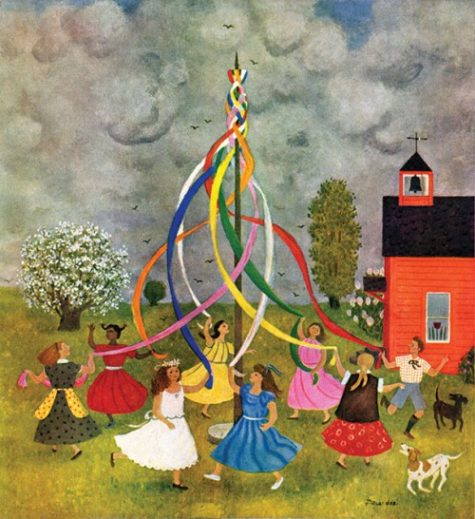
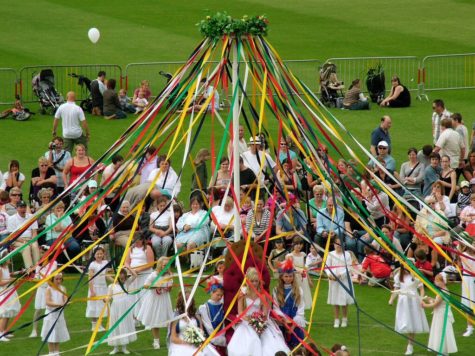

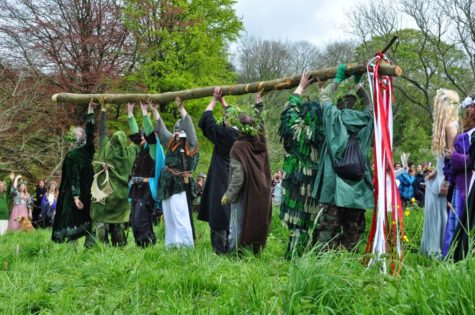

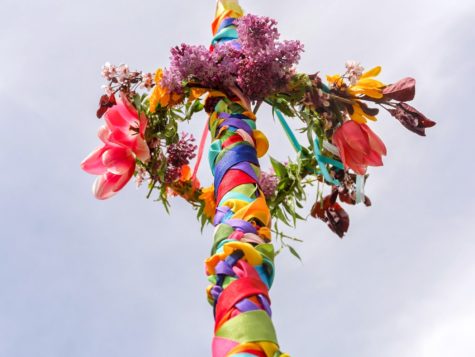
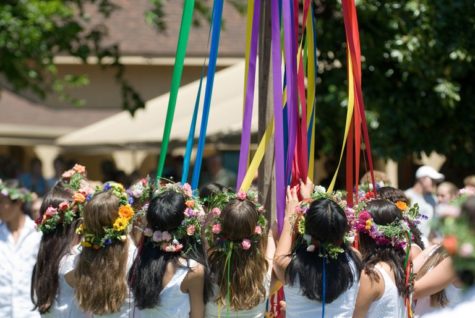
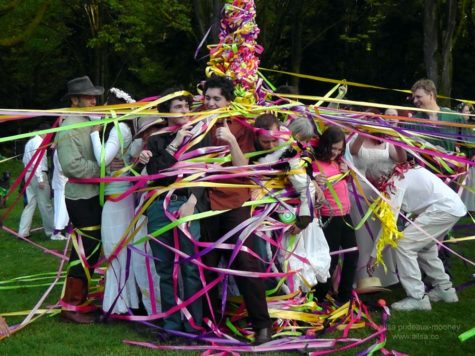
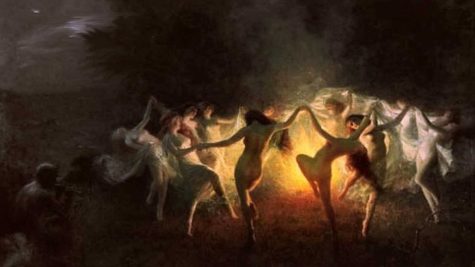
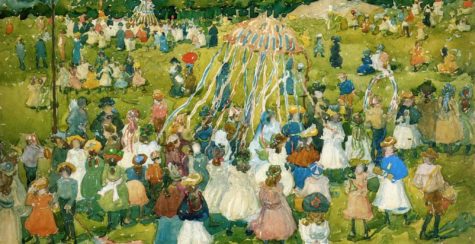
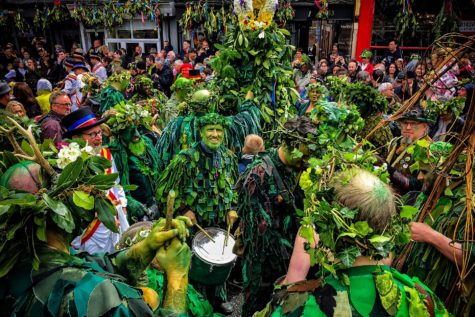
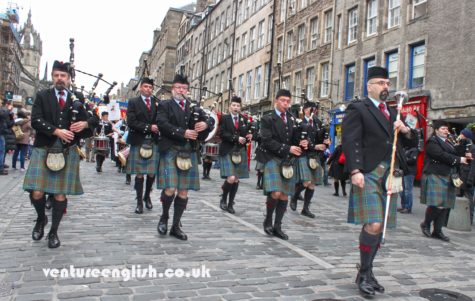
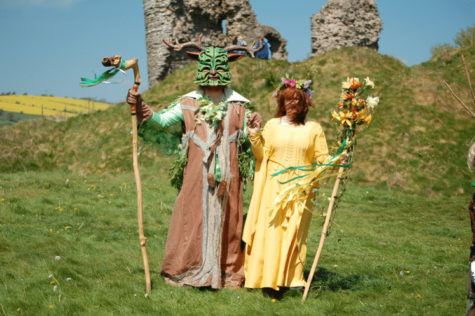


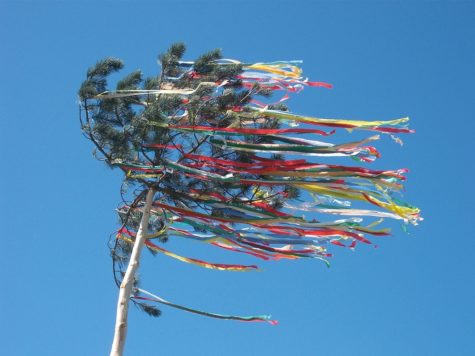

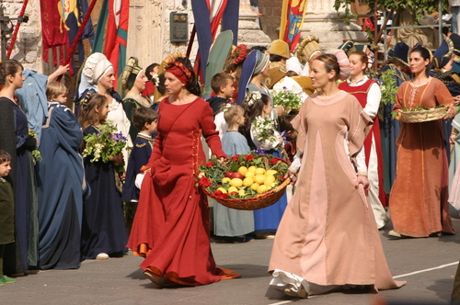
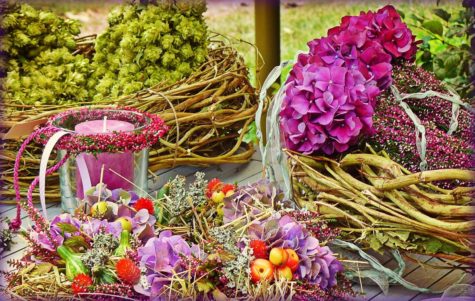


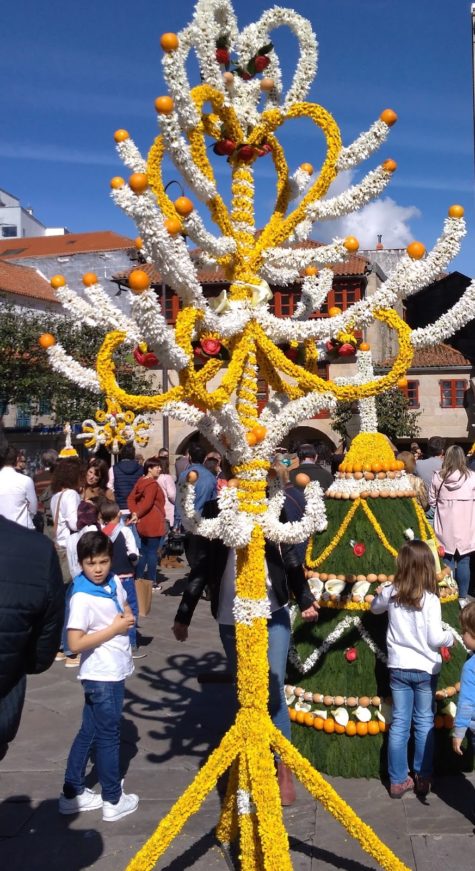

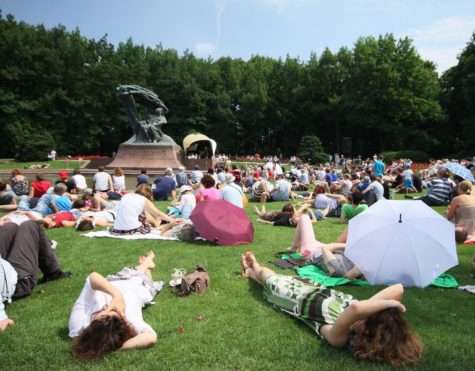






Leave a Reply